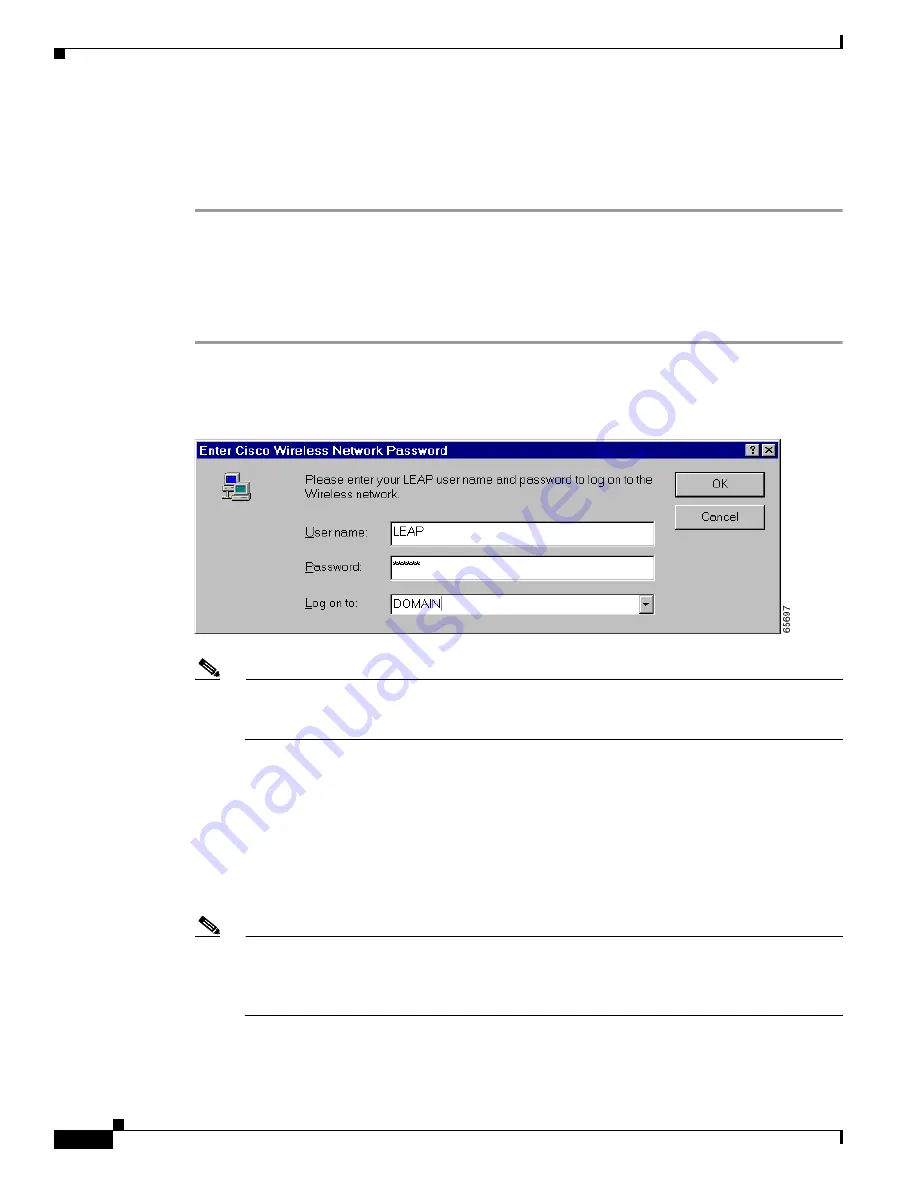
6-6
Cisco Aironet Wireless LAN Client Adapters Installation and Configuration Guide for Windows
OL-1394-04
Chapter 6 Using EAP Authentication
Using LEAP with an Automatically Prompted Login
Step 2
If your client adapter authenticates, the message disappears, and the Server Based Authentication field
on the ACU Status screen shows “LEAP Authenticated.”
If the authentication attempt fails, an error message appears after the LEAP timeout period has expired.
Refer to the
“Error Messages”
section in
Chapter 9
for the necessary action to take.
After a Reboot or Logon
After your computer reboots or you log on, follow the steps below to LEAP authenticate.
Step 1
When the LEAP login screen appears (see
Figure 6-4
), enter your LEAP username and password and
click OK. The domain name is optional.
Figure 6-4
LEAP Login Screen
Note
The LEAP login screen shown above appears on computers running Windows NT, 2000, or
XP. The LEAP login screen looks slightly different on computers running other Windows
operating systems.
The “LEAP Authentication in progress” message appears.
Step 2
If your client adapter authenticates, the message disappears, and the Server Based Authentication field
on the ACU Status screen shows “LEAP Authenticated.”
If the authentication attempt fails, an error message appears after the LEAP timeout period has expired.
Refer to the
“Error Messages”
section in
Chapter 9
for the necessary action to take.
Step 3
When the network login screen appears (see
Figure 6-5
and
Figure 6-6
), enter your network username
and password and click OK.
Note
Figure 6-5
shows an example network login screen that may appear on computers running
Windows 95, 98, and Me. Your screen may look different.
Figure 6-6
shows the network
login screen that appears on Windows 2000 systems. The login screen looks slightly different
on computers running Windows NT and XP.






























